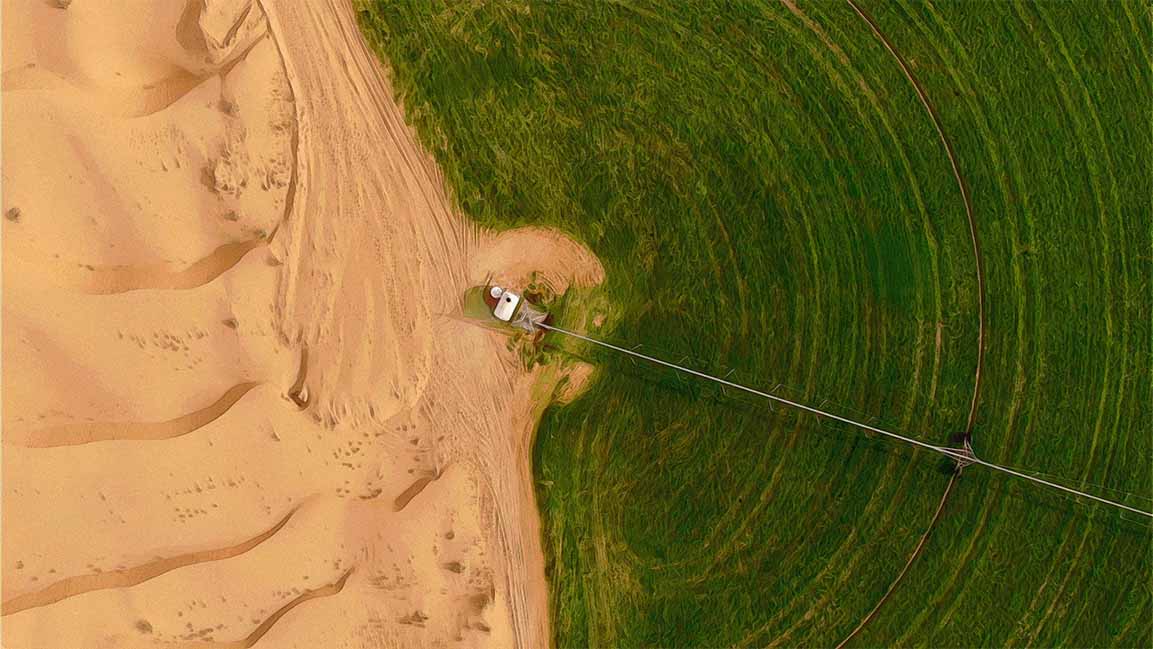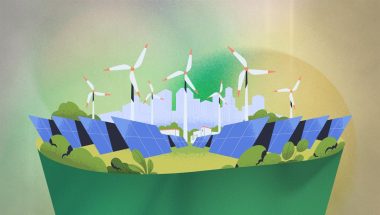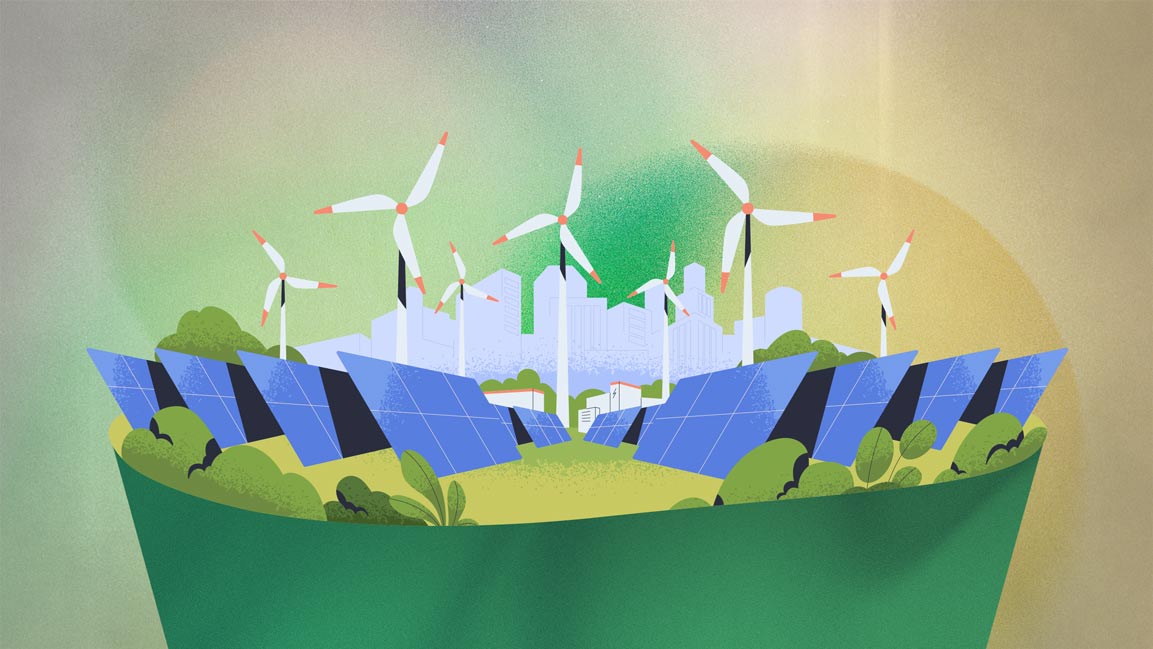- | 9:00 am
Gulf nations want to transform deserts into farmlands. Can technology make that happen?
Innovative desert-farming techniques, and pilot projects are set to expand into large-scale commercial farms in the region

Countries in the Arabian Gulf are strengthening their food security, with agriculture among the strategic pathways to this objective. Of course, there are many constraints to traditional farming in the desert. Apart from high-altitude and coastal areas, the region’s desert climate is anything but agriculture friendly.
Growing crops depends on agritech advancements. While high-tech vertical farms are sprouting up across the region, new technologies emerged that promise to solve the biggest challenges of desert agriculture: freshwater scarcity, lack of fertile arable land, and high temperatures.
TURNING SAND INTO PRODUCTIVE SOIL
Take Desert Control, for example. The Norwegian agtech company has developed a liquid natural clay (LNC) that enriches sandy soil, giving it the absorbing character of normal black soil. It acts like a sponge; the revolutionary solution improves the soil’s ability to retain water and nutrients, reducing the need for irrigation by up to 50% and enabling the cultivation of crops under the blazing sun.
The company has already signed partnership agreements in the UAE and Saudi Arabia to produce and distribute its LNC technology.
“The region also lacks fertile arable land, sandy soils, and desert sand with low organic matter and poor ability to retain water and nutrients, making it difficult to grow crops. LNC turns sandy soil into fertile arable land, enhancing its capacity to support plant life and food production,” says Ole Kristian Sivertsen, president and group CEO of Desert Control.
The UAE, which is 80% desert, has been an ideal experimenting ground for Desert Control. Field tests have seen the successful growth of numerous crops, including wheat, barley, and corn; fruits such as melons, tomatoes, and berries; and vegetables such as leafy greens, cucumbers, and carrots.
Citrus, mango, fig-trees, and forage crops like alfalfa and millets have also proven to thrive in LNC-treated soils.
“These trees provide nutritious fruits and create a beneficial microclimate, providing shade and habitat for other species. Furthermore, nut trees, including almond and pistachio, which traditionally require deep, fertile soil, can also be grown in areas treated with our LNC technology,” says Sivertsen.
Additionally, LNC has been used to grow legumes such as peas and beans. Legumes have a particular advantage as they provide a nitrogen source to the cropping system and improve the soil’s fertility and yield of crops. As such, they reduce farmers’ need for nitrogen fertilizer.
Dubai-based Dake Rechsand, the developer of breathable sand, is taking another disruptive approach to desert agriculture. Using a special coating, the technology allows free air passage while retaining water in the soil. According to the company, this reduces irrigation requirements by 70% to 80%.
So far, breathable sand has demonstrated its ability to support an impressive range of crops, including vegetables such as tomatoes, potatoes, cabbage, fruits, and nuts like mango, papaya, cashew, and avocado. Seasonal cash crops such as rice, wheat, soybeans, maize, and sugarcane have also been cultivated successfully using this technology.
“The abundance of desert sand, the primary raw material for breathable sand, makes the technology cost-effective in the Arabian Gulf,” says Chandra Dake, CEO of Dake Rechsand, which is currently working on ambitious Verra-listed agroforestry and carbon sequestration project that aims to plant 11 million trees in arid regions.
“Barring the initial setup costs, the technology ultimately offers significant savings. Breathable sand retains water efficiently, reducing irrigation needs and mitigating the costs associated with water procurement and transportation. The increased nutrient retention in the soil also reduces the need for expensive synthetic fertilizers,” adds Dake.
STAPLE CROPS FOR FOOD SECURITY
One of the primary prerequisites for enhancing agricultural production in the Arabian Gulf is the development of crop varieties that align with diverse cropping systems, geographical factors, and market demands, according to Dr. Ashok Kumar Are, director regional program for Asia at the International Crops Research Institute for the Semiarid Tropics (ICRISAT).
ICRISAT recently partnered with the UN Food and Agriculture Organization and the Saudi Ministry of Environment, Water, and Agriculture to help increase the productivity of three vital dryland crops—sorghum, pearl millet, and sesame—by up to 20% in Makkah, Jazan, Aseer, and Al-Baha. Collectively, these southwestern regions produce 170,000 tons of sorghum, 4,800 tons of pearl millet, and 4,000 tons of sesame across 70,000 hectares.
“Despite limited water availability, these crops have shown promising productivity. This productivity can be further enhanced by adopting improved crop cultivars, efficient farm management practices, pest and disease control measures, and aligning production to meet market demands,” says Dr Are.
ICRISAT’s team had previously identified 15-20 varieties of rain-fed cereals with good yields in Sudan, which has similar climatic conditions to Saudi Arabia. The organization will use this knowledge to select the most suitable varieties for the targeted regions
WHEAT FARMS PROVE THE IMPOSSIBLE
The ability to grow sufficient cereal and grain crops domestically would be a game-changer for the Gulf countries, helping alleviate some of their heavy reliance on imports. Wheat cultivation would especially be a breakthrough for food security, being a staple crop that contributes 20% of the protein and calories consumed globally.
Sharjah, the UAE’s third-largest emirate, has already transformed 400 hectares of desert into a wheat farm that uses desalinated water for irrigation. Launched in November 2022, the pesticide-free farm is equipped with advanced technology that includes an on-site weather station, soil sensors to regulate irrigation, and satellites that perform thermal imaging of the site.
The farm’s first phase has produced over 200 tonnes of yield by defying predictions that wheat could not be cultivated in the desert. And this is just the beginning, as plans are to expand the farm fivefold to 1,900 hectares.
Oman, too, is pushing for wheat cultivation, with the government allocating nearly $12.9 million and various land plots across the country to support domestic production. During the 2022-2023 season, 81 farms in the Najd region produced about 5,940 tonnes of wheat.
Meanwhile, Saudi Arabia, which is 95% desert, abandoned plans in 2008 to become self-reliant on wheat as farming in the desert depleted aquifers and drained scarce water supplies. In 2021-2022, the country produced only 700,000 metric tons of wheat but consumed 3.5 million metric tons, the difference being imports.
“To increase food production in the Gulf countries, it is essential to map suitable areas for wheat cultivation during the cool season and develop varieties that can withstand the challenges of the Gulf region,” says Dr. Are. Experts at Sharjah’s wheat farm tested 35 cereal crop varieties before identifying the most suitable one to grow locally.
“Additionally, cropping systems incorporating short-duration legume crops in rotation with wheat can contribute to sustainable production. Dryland cereals offer several advantages, such as the production of green forage, the ability to obtain multiple cuttings from a single planting, efficient water utilization, and higher biomass production,” adds Dr. Are.
As efforts continue to deploy innovative desert-farming techniques, pilot projects will expand into large-scale commercial farms, and a wider variety of cultivated crops will be available on the market.
A greener desert may be a dream for now, but at the current pace of agritech advancements, it will likely happen sooner than we expect.







































